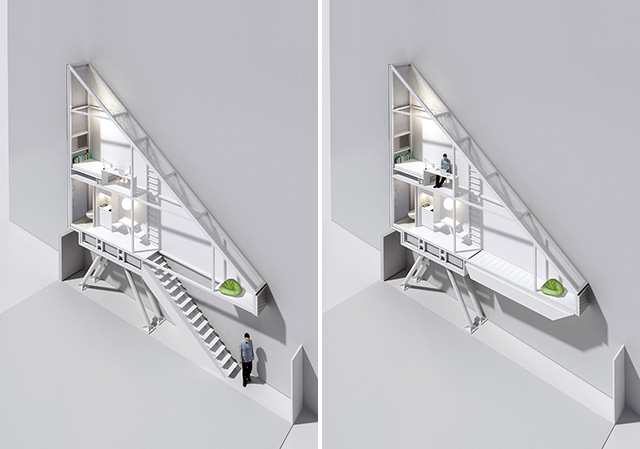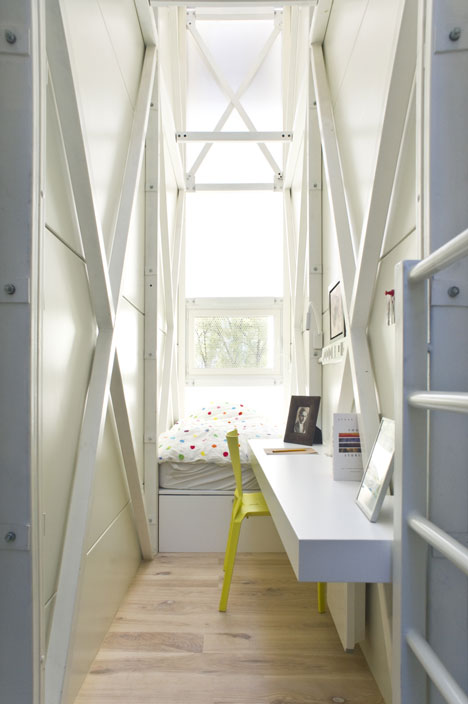One of the world's narrowest buildings
Polish architect Jakub Szczęsny designed a two-story aluminium and plastic house with a polycarbonate surface. It’s located in Warsaw on the plot measuring 92 centimetres in its narrowest point and 152 centimetres in its widest. The house itself is 72 centimetres and 122 centimetres in the spots.

source
Interestingly, there is no windows. Polycarbonate surface is semitransparent so light would enter and the residents wouldn’t feel claustrophobic.

source
However, that fate may be difficult to avoid – after all the structure with just enough space for one inhabitant is wedged between two buildings and can only be entered by a ladder.
The house is squeezed into a crevice between two buildings from two historical epochs. The first is a brick building – a fragment of the pre-world war II city.
The second – a cooperative concrete apartment building, which was aimed at negating the previous city landscape. Their adjacency is coincidental – like many architectural structures in Warsaw.
Despite the small area, there is a toilet, shower and kitchen with cupboards, table for two at the ground floor. A nearly double-size bed, small table with a chair is in the bedroom on the second floor.

source

source
Structurally it is a simple tri-dimensional steel frame finished with plywood, insulated sandwich panels and styrofoam covered with concrete cloth painted white. The body of the house is raised up on metal and aluminium stilts 3 meters above the ground and a staircase leads inside from underneath.

source
The first tenant is Etgar Keret, an Israeli writer whose ancestors died in Poland during the Holocaust. "It is a kind of a memorial to my family," said Keret. The structure has been named Keret House after the writer. Keret said he only visits Warsaw twice a year, so other tenants will be able to try out the tight quarters of the non-profit building for free.
By Polish law, Keret House is too small to be a residence. It has been classified as an art installation.